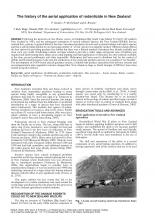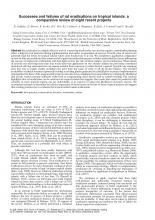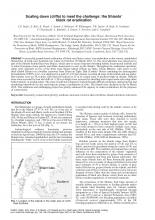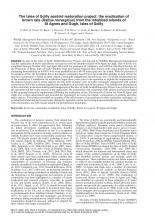The Isles of Scilly seabird restoration project: the eradication of brown rats (Rattus norvegicus) from the inhabited islands of St Agnes and Gugh, Isles of Scilly


Island and Ocean Ecosystems, BRB
Available Online
Bell, E.
,
Boyle, D.
,
Buckley, P.
,
Floyd, K.
,
Garratt, W.
,
Lock, L.
,
Mason, S.
,
McCarthy, R.
,
Pearce, J.
,
Pearson, J.
,
St Pierre, P.
,
Sugar, K.
2019
As part of the Isles of Scilly Seabird Recovery Project, and directed by Wildlife Management International Ltd, the eradication of brown rats (Rattus norvegicus) from the inhabited islands of St Agnes & Gugh, Isles of Scilly was completed between October 2013 and April 2014 with the assistance of volunteers, and staff from the Royal Society for the Protection of Birds, Isles of Scilly Wildlife Trust and Natural England. Bait stations with cereal-based wax blocks containing bromadiolone at 0.005% w/w were established on a 4050 metre grid over the island. With the presence of 85 residents on the 142 ha islands, this is the largest community-based brown rat eradication globally to date. Given the fact that a community is based on these islands, community engagement and advocacy was a vital and fundamental part of the eradication. Consultation for eradication began three years prior to the operation to explain the requirements for the proposed project and to assess support, but this built on many years of wider community engagement with seabird conservation. All of the residents supported the eradication of rats and vision of the project. The consultation and inclusion of the community in decision-making and management of the Isles of Scilly Seabird Recovery Project was a critical part of the operation and key to the success of the eradication. The community took ownership of the project and has committed to the on-going biosecurity requirements following the eradication of rats. The removal of brown rats from St Agnes and Gugh was a major achievement and provided the opportunity to restore the islands' communities of seabirds and other native species. This project provided an example of the effectiveness of ground-based rodent eradication techniques on an inhabited island and the lessons learnt during this operation can be used to help proposed eradications on other islands with communities and with terrain suitable for ground-based techniques.







